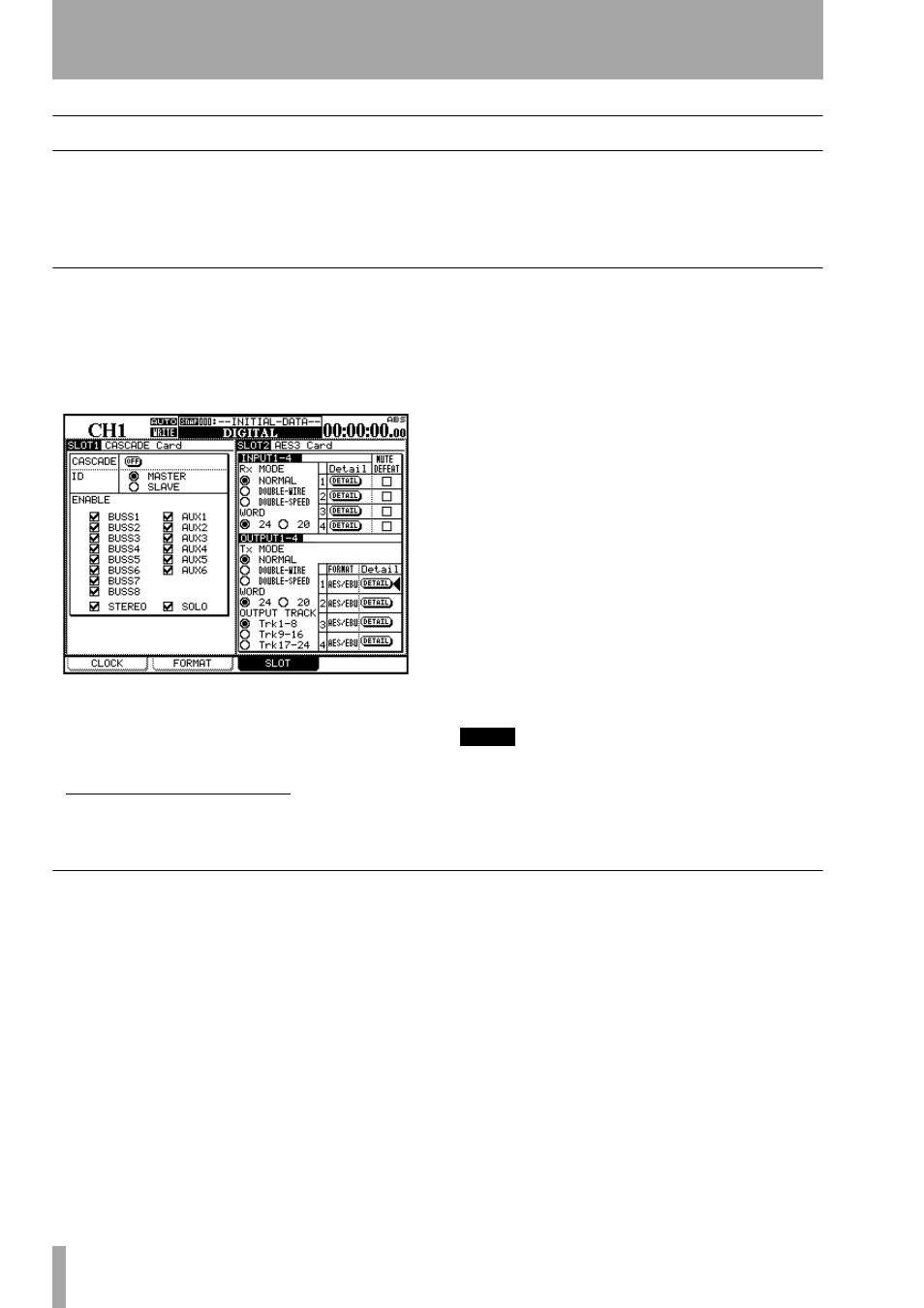Aes3 card, Input options, Output options – Teac DM-24 User Manual
Page 122: Input options output options, 16 – options—aes3 card

16 – Options—AES3 card
122
TASCAM DM-24 Reference Manual
AES3 card
This card allows for the connection of up to four AES
input and four output lines.
In normal sampling frequency mode, this provides
eight audio channels in each direction, and in high
sampling frequency mode, it provides four channels
in each direction.
Input options
The inputs may be selected as return sources for
channels (“Assigning inputs to channels” on page 38)
and the outputs of the cards may be selected as either
buss or aux send destinations (“Output assignments”
on page 42).
The inputs may be set to be normal sampling fre-
quency (
NORMAL
), in normal sampling frequency
mode. In dual sampling frequency mode, the choices
are dual line (
DUAL-WIRE
) or high speed (
HIGH-
SPEED
)
1
.
The word length can be set to be 24 or 20 bits long.
The on-screen
DETAIL
button provides information on
the signal currently being received if the cursor is
moved to the button, and
ENTER
is pressed.
This information includes: format, contents of the
data, emphasis status, channel mode, sampling fre-
quency word length, etc. Dismiss the popup with the
ENTER
key.
The incoming format is automatically detected.
The
MUTE DEFEAT
checkbox allows overriding of the
automatic mute function. This mute function is usu-
ally activated when data is received that does not
conform completely to the AES audio standards.
However, some units output audio data which is actu-
ally correct, but one or two bits in the audio cause it
to be interpreted as invalid. If you are using one of
these units as an input to the DM-24, you may check
these boxes to allow the audio to be input to the DM-
24.
NOTE
These checkboxes should only be enabled if you are sat-
isfied that the device from which the data is being
received actually is outputting the correct form of audio
data.
Output options
In high sampling frequency mode, the options for the
output format are
DUAL-LINE
or
HIGH-SPEED
, as for
the input options.
In normal sampling frequency mode, only the
NORMAL
option is available.
If an attempt is made to select an inappropriate trans-
fer mode, a pop-up error message appears.
Note that unlike the inputs, the format must be
selected for all outputs together. It is not possible to
make independent settings for each output.
The word length (
WORD
) can be selected as 24-bit or
20-bit).
Each of the outputs can be selected (normal sampling
frequency) to transmit either
SPDIF
or
AES/EBU
. In
high sampling frequency mode, only AES/EBU is
meaningful.
In high-speed mode, only inputs 1 and 3 are used (2
and 4 are unused).
When a
DETAIL
button is pressed, the details of the
audio data currently being output are displayed in a
popup button.
Details include: format, contents, emphasis, SCMS
status, category, generational status, and sampling
frequency. Dismiss the popup with the
ENTER
key.
1. For definitions, see “Constraints on other
